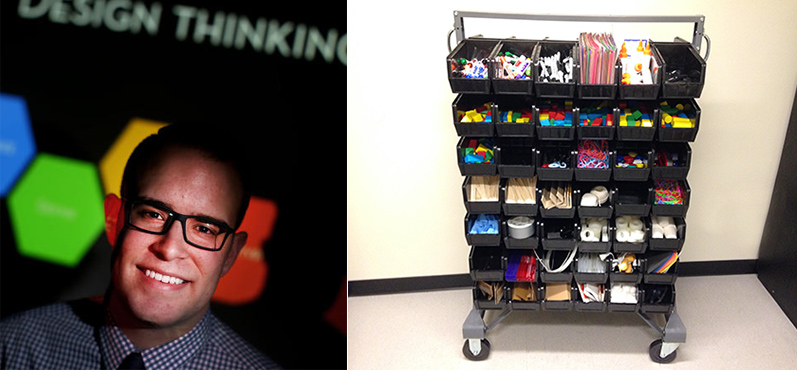#UVUIFamily (Utah Valley University Innovation Family)
by Magann Dykema
Spoilers:
- Pens are designed for right handed people.
- Chairlifts are magical in team building.
- I love my #UIFamily.
It never ceases to amaze me how much the community of University Innovation Fellows is like a family. Whenever I am in a room full of UIFs, I instantly feel at home. With over 1500 Fellows and counting, it is difficult to know everyone, and there is something special that happens when I meet another UIF in person for the first time. Most of the people at the Rocky Mountain Regional Meetup, from June 23-24, 2018, I had never met before, and that did not stop us from greeting each other with hugs and phrases such as, “You’re the one I’ve been emailing!” or “I finally can put a face to the name!”
The event was hosted and designed by the Utah Valley University Fellows (UVUIF as they call themselves) Khaliun “Holly” Amarjargal, Brayden Cutler, Wendy Fernandez, Luke Kennard, Tim Smith, Nicholas Tyler, Nick Varney and their Faculty Champion Cynthia Wong. The team designed a weekend so unique that I cannot compare it to any other UIF experience I have had…They carefully crafted a mixture of indoor/outdoor experiences that showcased the work they are doing on campus, as well as the beauty of the community around them. There were a mixture of hands on experiences, engaging presentations, and team building opportunities.
Our first day, we arrived at the UVU Business Resource Center and were greeted with smiles and hugs from everyone as well as handed a waiver. A few of us looked at each other and wondered, “What did we get ourselves into that we needed to sign a waiver with an emergency contact?” I can now say that we got ourselves into the experience that we would all be grateful for. Before we got started, our attention was directed to the corner of the room where the team had brought in the famous mobile prototyping cart for us to use! I have heard about this cart so many times from UVU Fellow Tanner Wheadon, and there it was. It may not seem exciting to some people, but there was an excitement in the room as some of us were given the opportunity to see the cart in real life rather than in photos!
We didn’t waste anytime jumping into the day’s festivities. Our first activity: an Environmental Design Challenge. Nick shared with us a systems map that he had created with some teammates that they had used for a competition at Oxford. With about half of the room being from out of town, we were surprised to learn that Salt Lake City has an issue with smog which is trapped between the mountains due to inversions in the winter. After sharing with us the process of interviewing stakeholders and his team’s findings, Nick challenged us with creating a dual-purpose solution that would improve air quality and appeal to Utahns (residents of Utah). He shared that the top issues that Utahns are willing to contribute to a solution are crime, air quality, homelessness, economic opportunity, and public transportation.
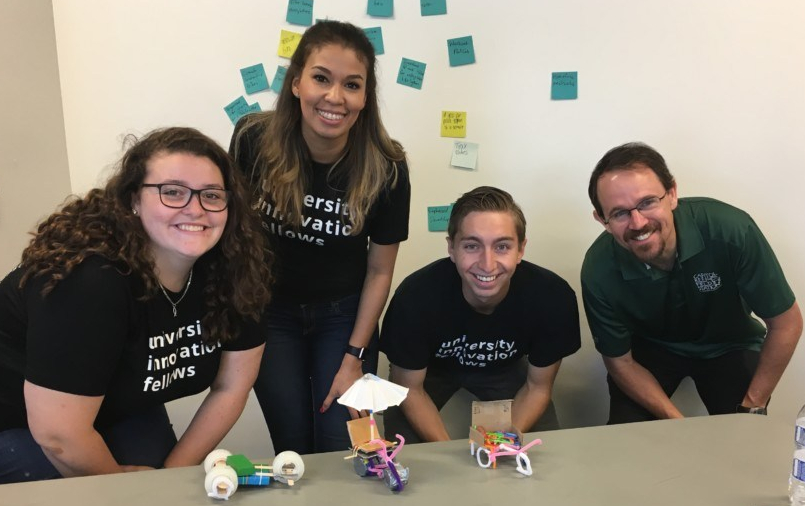
We formed teams (making sure there was at least one Utahn in each team) and started brainstorming and prototyping. In the end, my team created a solution that would tackle a few of the listed issues. Our idea: Pedicabs in Salt Lake City. Homeless community members would receive work through either building or powering the pedicabs, and community members and tourists would ride the pedicabs as another form of transportation. Other teams came up with solutions such as a carnival, coworking spaces, and community centers with Teslas.
Next, we headed on a walk to learn more about campus and how UVU is designed for student success – from the exposed, colored pipes running through the buildings designed for teaching to the hands on classroom models to the stackable credentials to the dual-mission model. It was evident how valued the students’ voices are at UVU.
Our last stop before lunch was an amazing stained glass window series called the Roots Of Knowledge. Throughout the artwork, it tells the story of the human quest for knowledge. The artist even added little “easter eggs” throughout. (Hint: Batman is standing on top of a building in panel Y2 and looks like a shadow.) I could have spent hours in the room looking at the 80 panes of glass, and I still would not have seen it all. It was truly breathtaking.

We enjoyed lunch in a room of the library that overlooked the gorgeous landscape of mountains and then we made our way back to the Business Resource Center for an Innovation Incubator led by Luke, Nicholas, Nick, and Cynthia. For those of you that have participated in an un-conference, the idea is similar. Using Poll Everywhere, we answered the question: How might we expand UIF influence on our campuses? From there, the top four solutions were placed on whiteboards around the room:
- Popup events for students, faculty, and administration
- Monthly design thinking challenges
- Sneaky little experiments
- UIF showcase (showing different student projects).
We shared our thoughts on the topics of interest by walking around and sharing our thoughts; what came out of it were really cool ideas. Ideas like a secret book in the library with event invitation in it and a golf cart that brings students from the parking lot to class and asks trivia questions about innovation on campus. I may have to bring some of these things back to my campus with me.
After a short break, Tim led us in a design sprint around the idea of bringing mobile makerspaces to the community and K-12 schools. The design sprint was based off of the five day Design Sprint that Google Ventures has developed. Because of limited amount of time, we focused on pieces of the first three days of the sprint and fit it into an hour and a half. Teams came up with radically different solutions and different interpretations of the sprint guidelines. My team focused on bringing the mobile makerspace to elementary schools. We wanted to prove to the schools the importance of this tool in a creative way while solving other concerns the school may have. We created a food truck makerspace that taught students lessons of making through cooking breakfast while also helping to feed students that might not otherwise have the opportunity to eat breakfast. Other teams’ solutions included a drone delivery system with prototyping tools, a creative way to occupy underutilized school space after hours that engaged the whole school district, and a consultation business that would teach employers how to bring out talent from their staff through the use of hackathons and mobile maker carts.
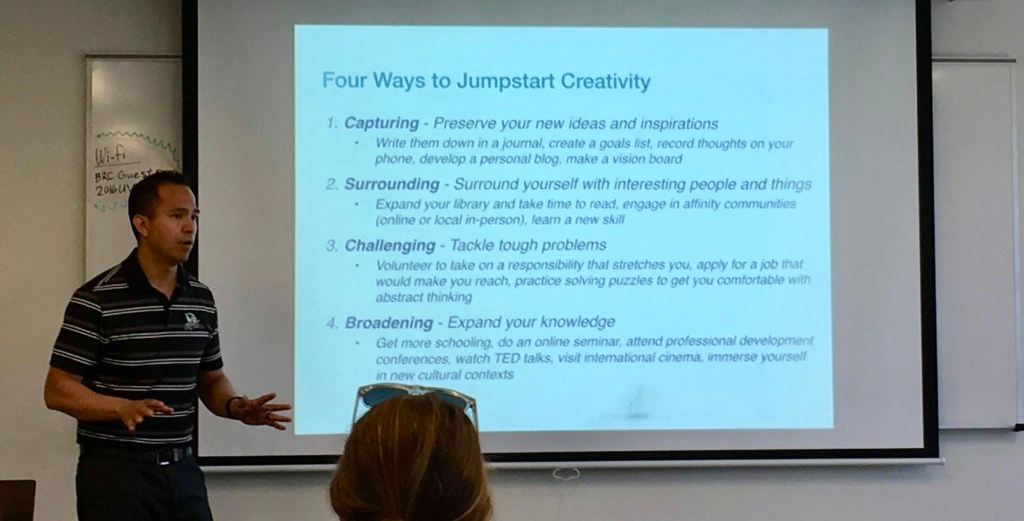
The programming for the first day ended with a keynote from Dr. Kyle Reyes. I can honestly say that this is one of the best keynotes I have ever heard. Dr. Reyes had us looking at the different lenses we are born with in life, build throughout childhood, and how those are adjusted as we continue to experience life. One of the most impactful things that he shared with us was how the world is often designed for people that are right handed. He proceeded to list off things that are difficult for people that are left handed such as opening doors, writing, and scissors. Then, he blew everyone’s minds with…well, I won’t spoil you experiencing this. Find a pen. Place it in your right hand and read it. Now, move it to your left hand and read it. Did you notice something change? Pens are designed to be read by right handed people! As a right handed person myself, I never realized how much I take for granted; it was missing from the catalog in my brain. Dr. Reyes explained how all of our experiences are cataloged in our brains which can create preconceived ideas and biases. As we continue to learn and experience new things, our catalog gets updated.
Our first day had come to an end, but that did not stop us from spending time with each other. The Pleasant Grove Strawberry Days were happening only a short drive away. We piled into the cars and made our way to the festivities. There, we enjoyed walking around the carnival, eating Strawberries N’ Cream, and watching the rodeo. It was a nice way to end the day and get to spend more time getting to know all of the people I was in Utah for the weekend with.
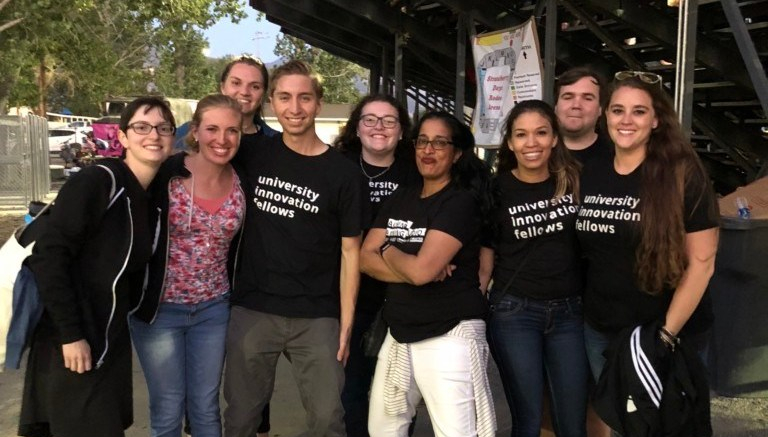
Headed into the second day, we had a change of scenery. The day was spent at Brayden’s aunt and uncle’s cabin in Sundance. We arrived at this amazing cabin on the side of the mountain where we started our day off with Nicholas sharing an ignite about what he is currently working on at UVU. He shared how he is starting a video project in work with Lifey, an autobiography company near the school. These videos give students the opportunity to share their innovation stories because as Nicholas asked, “If no one remembers what we did, then what was the point of what we have done?” These video preserved the stories of the innovative students at UVU. We pondered the question “How will you leave your mark?” as we walked outside.
There, waiting for us, were three piles of supplies including a tarp, a pool noodle, a shovel, rope, a pair of scissors, duct tape, and some gardening gloves. Our challenge was to create a shelter that would keep us warm and dry and be sturdy. It was extreme prototyping at its finest. We broke off into teams and went off in different directions into the forest to create our shelters. The shelters were tested and we were allowed to make some modifications before the final test. As a group, we gathered together to walk around to all of the shelters and see how they structured based on weather-proofing, sturdiness, and warmth. In the end, we had all created structures that would have kept us safe if we would have had to sleep in them that night.
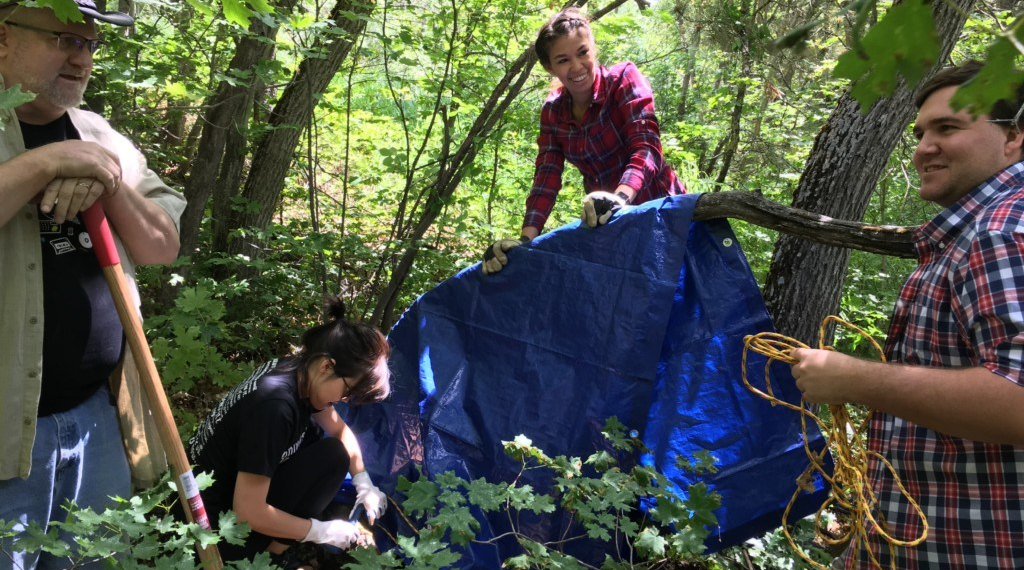
At this point in the day, it was getting close to lunchtime so we all piled in the cars to head down to the Sundance Resort. There, we rode an hour-long chairlift to the top of the mountain; These chairlift rides and conversations are some that I will remember for a long time. With no structure for the ride and the opportunity for free flowing conversations, we rode up to the top of the mountain in groups of four getting to know each other, continuing earlier conversations, and creating connections that we otherwise may have never made. The chairlifts were truly magical.
As we reached the top of the mountain for a late lunch, we could not help but notice the gorgeous mountains that were surrounding us. While everyone was taking in the view, I stepped aside to watch them. Something had changed, this group that was already like a family had become even more of a family (if that is even possible). I watched as people were taking pictures together, laughing, running after hats flying in the wind…we were one big, happy family! I didn’t want this moment to end, but we had to make our way back down the mountain before the chairlift closed. Conversations continued as we made the hour ride down the mountain, and the group continued to grow as a family.
Everyone was pretty quiet as we made our way back to the cabin. I could tell that the impending end of weekend was floating around in the back of everyone’s minds. That did not stop us though. We gathered outside near a slackline that was set up with hammocks all around us. Brayden looked to Humera and asked if she would be so kind to help him with a demonstration. With the assistance of Nick on one side of the slackline and Humera walking across, Brayden proceeded to give an ignite on his UIF journey. He shared that you will fall off, but it is the people that are there to support and guide you that keep you going. You have to keep looking forward to the goal. As Humera made it to the end, the group erupted into applause. Brayden continued to step up onto the slackline, make his way across, and share his final thoughts: the UIF journey is just like slacklining.
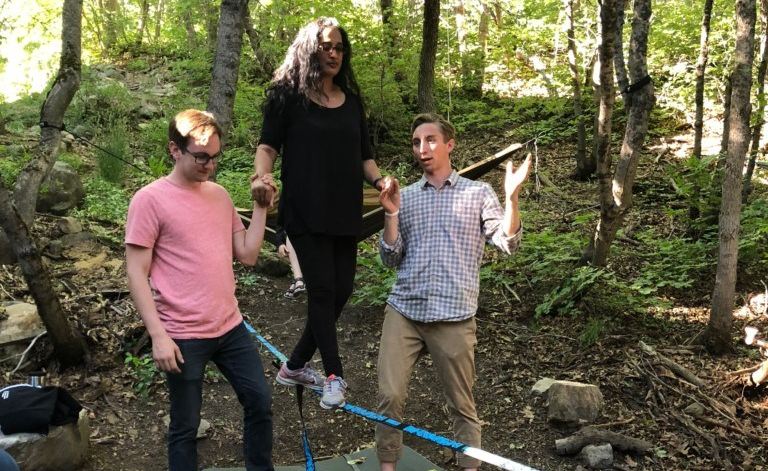
From that point, everyone was encouraged to try out the slackline and the hammocks that were placed around. We watched as everyone supported each other across the slackline. Whether it was the two people helping someone make it across or the group that cheered them on, the support was unreal. As someone who had never tried slacklining, I was nervous to step up on to the one inch piece of nylon holding me up, but I was able to do so and make it all of the way across because of everyone supporting me.
As the evening was wrapping up, there was a feeling in the atmosphere of gratitude, happiness, and love. We sat in the living room in a circle and went around sharing what we were grateful for during the weekend. The theme that many shared: the family that we had been able to be with for the weekend. Crying, laughing, and hugs proceeded as we said our goodbyes. But, they were not “goodbyes”; rather, they were “see you laters”. Because with the family UIF creates, you never know the next time you will talk to someone in person, on a BlueJeans call, in an email, or in our Facebook group. This family that UIF creates is like no other. With 1500+ people all over the world, there is always a family member not too far away. This family meetup in Utah is just one prime example of the power of the #UIFamily that I love.
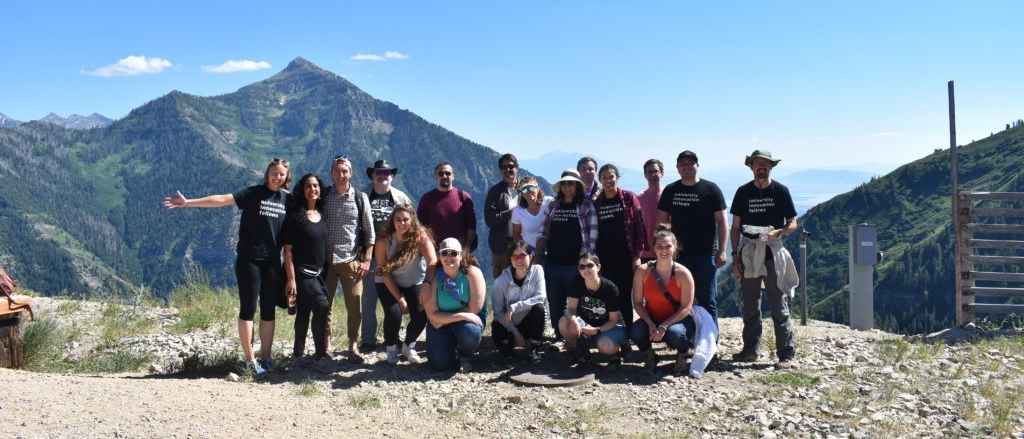
Insights from the UVUIFs:
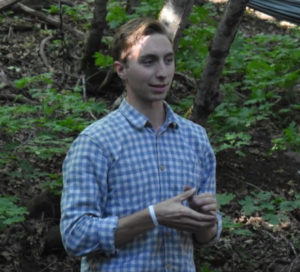
“I was shocked and proud to see the meetup happen. Seeing the faculty and students come together as one to make this happen was like no other. I talked to Tanner Wheadon about it afterwards, and we would have never believed that our campus fellows would ever get to the point of holding a meetup. One thought I continually have is concerning our current status, we have done some great things, and our program has come far. However I don’t think we can settle for the things we have done so far. We want to see lasting impact, and that is going to take more time and work.” – Brayden Cutler, University Innovation Fellow
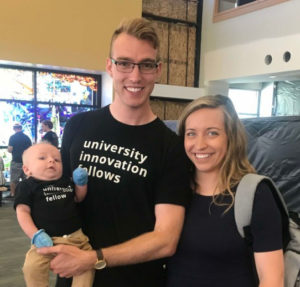
“We needed to design for the user in mind. What that meant to us was that we weren’t going to give you something that you had been taught at every UIF meet up, nor was it something that you would see at any other regional meet up. We wanted to give you the experience and lifestyle of Utah. We wanted you to learn of our real air quality issues, see the gorgeous mountains, and live the slow paced reflective Sundays. We value the family time so much. As evidenced by the two future fellows present (e.g. Tanner Wheadon’s son and ours).” – Luke Kennard, University Innovation Fellow
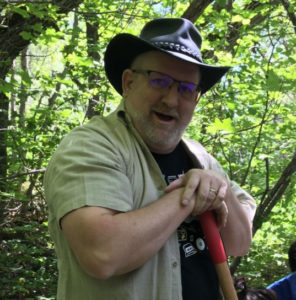
“The planning, coordinating, getting the permissions from the right VPs and Deans, working with the Faculty Champions and the UVU Innovation Council to take this from a goal to a reality was a challenging growth opportunity and I am ever so grateful for the experience. The event itself was incredible and that is due to the herculean efforts of the UVU Fellows and faculty that picked up the baton and carried it to the finish line… A very memorable event filled with camaraderie and strengthening of bonds that forged lasting relationships and brought all of the participating UVU personnel together as one team instead of several cohorts.” – Tim Smith, University Innovation Fellow
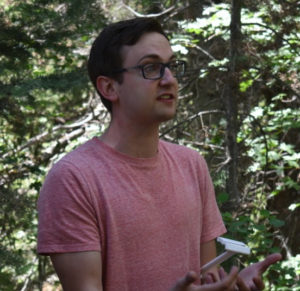
“The biggest thing I pushed for in the beginning of our planning was that if everyone is going to come here, we wanted to give you the UVU and Utah experience. Saturday was focused on the UVU experience: showing you the Business Resource Center (which is the most innovative and entrepreneurial resource on campus) and showing you how campus was designed for student engagement. Sunday was focused on the Utah experience: showing you the Rocky Mountains, outdoor culture, and one of the gems of Utah – Sundance.” – Nick Varney, University Innovation Fellow
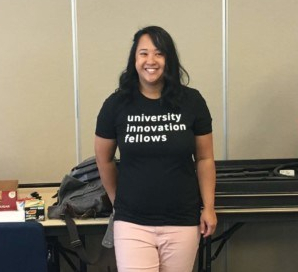
“The Rocky Mountain Meetup was a huge success due to a combined team effort. It was a privilege to watch individual strengths and talents emerge as we worked through different challenges involved with navigating all of the rules and regulations of the university, lining up events and activities and coordinating the logistics. Because this was our first meetup, we knew that the event was going to be a prototype and we had our share of “ta-da moments” and frustration at times. As the fellows leveraged their individual strengths, each iteration became better and better. In fact, the meetup ended up looking completely different than our initial plans. With a “yes, and” attitude a great deal of hard work and sacrifice, the meetup was far better than what any of us could have achieved individually.” – Cynthia Wong, Faculty Champion
About the Author: Magann Dykema
Magann is a Fellow from Michigan Technological University where she is studying Civil Engineering. This summer, she is interning for the University Innovation Fellows program. For more information on her and the work she is doing: http://universityinnovation.org/wiki/Magann_Dykema


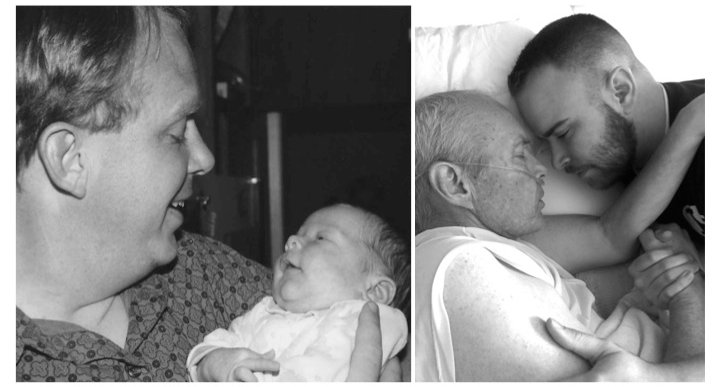
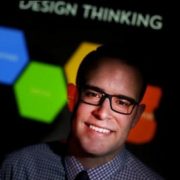 About the author:
About the author: